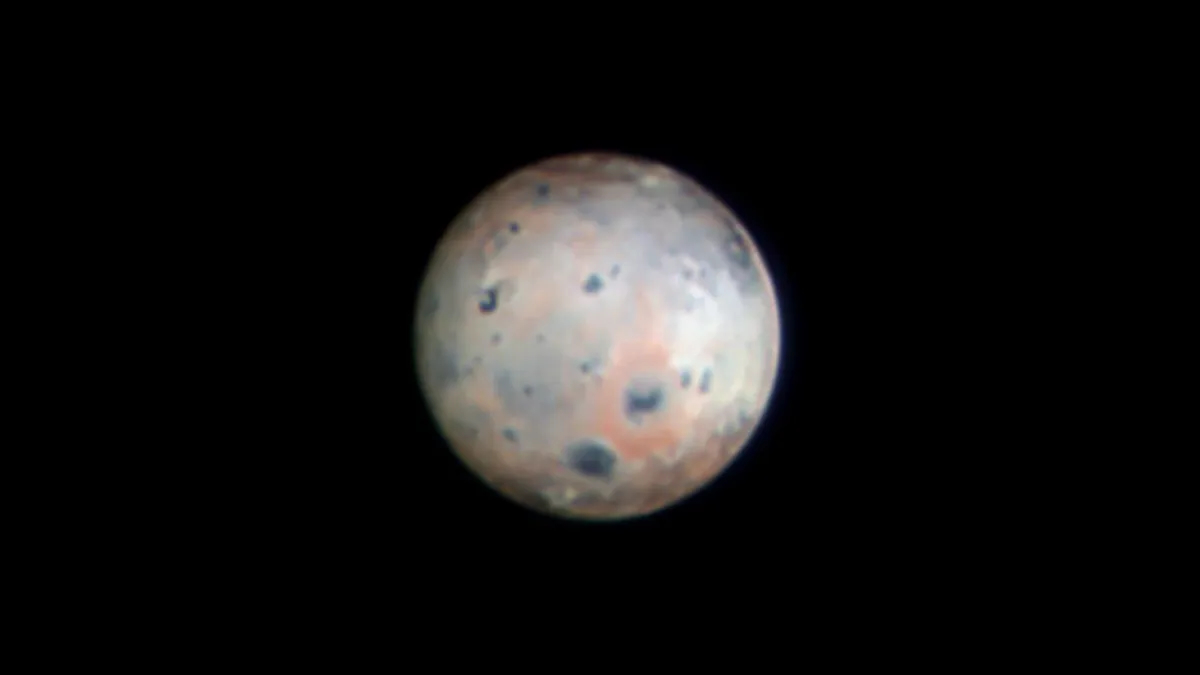New photo of Jupiter’s volcanic moon "equivalent to taking a picture of a dime from 100 miles away"
Using a telescope perched on a mountain in Arizona, scientists have managed to photograph the moon Io in amazing detail, rivalling images taken with space telescopes

You’d be forgiven for thinking that these recently released images of Jupiter’s active moon named Io, were taken from space.
The images were in fact, taken by attaching a camera known as the SHARK-VIS attached to the Large Binocular Telescope, which sits atop Mt. Graham in Arizona, USA.
This is equivalent to taking a picture of a dime-sized object from 100 miles
The photographs highlight features on Io’s surface as small as 50 miles (80 kilometers) wide, a perspective that was until now only achievable by a spacecraft that was studying Jupiter from space.
"This is equivalent to taking a picture of a dime-sized object from 100 miles (161 kilometers) away," according to a statement by the University of Arizona, which manages the telescope.
The new images are so detailed that scientists could identify overlapping deposits of lava that erupted from two active volcanoes just south of the moon’s equator. This breakthrough will usher in a “new age in planetary science," according to the study’s co-author Ashley Davies, a principal scientist for planetary geosciences at NASA’s Jet Propulsion Laboratory.
The Large Binocular Telescope on Mt Graham is one of a kind, and one of the most powerful Earth based observatories in the world.
The telescope has two 27-foot mirrors mounted side by side, and a powerful adaptive optics system to compensate for blurring from atmospheric turbulence.
The best camera deals, reviews, product advice, and unmissable photography news, direct to your inbox!
Slightly larger than Earth’s moon, Io is the innermost of Jupiter’s moons, which also include Europa, Ganymede and Callisto.
Io is the most volcanically active body in the solar system, and and its eruptions dwarf their contemporaries on Earth. Suspended in a constant gravitational tug of war with its lunar contemporaries, this leads to frictional heat build up in its interior, which is thought to be the reasons behind its volcanic activity.
"Io, therefore, presents a unique opportunity to learn about the mighty eruptions that helped shape the surfaces of the Earth and the moon in their distant pasts," said Al Conrad, associate staff scientist at the Large Binocular Telescope Observatory.
Check out our guide to the best cameras for astrophotography, and the best lenses to capture the night sky.
We've also got all the information you need about the best low light cameras.

After graduating from Cardiff University with an Master's Degree in Journalism, Media and Communications Leonie developed a love of photography after taking a year out to travel around the world.
While visiting countries such as Mongolia, Kazakhstan, Bangladesh and Ukraine with her trusty Nikon, Leonie learned how to capture the beauty of these inspiring places, and her photography has accompanied her various freelance travel features.
As well as travel photography Leonie also has a passion for wildlife photography both in the UK and abroad.

